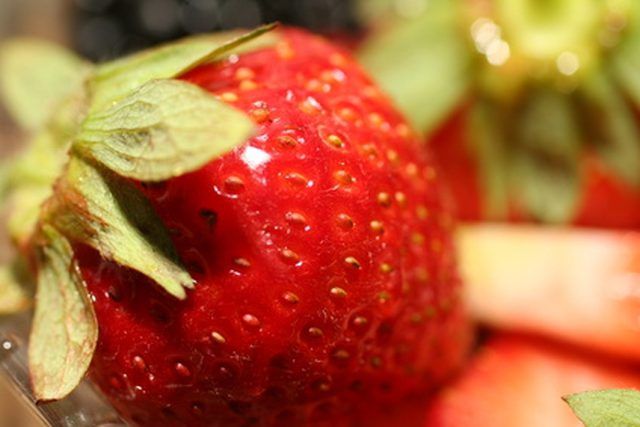Bulbs
Flower Basics
Flower Beds & Specialty Gardens
Flower Garden
Garden Furniture
Garden Gnomes
Garden Seeds
Garden Sheds
Garden Statues
Garden Tools & Supplies
Gardening Basics
Green & Organic
Groundcovers & Vines
Growing Annuals
Growing Basil
Growing Beans
Growing Berries
Growing Blueberries
Growing Cactus
Growing Corn
Growing Cotton
Growing Edibles
Growing Flowers
Growing Garlic
Growing Grapes
Growing Grass
Growing Herbs
Growing Jasmine
Growing Mint
Growing Mushrooms
Orchids
Growing Peanuts
Growing Perennials
Growing Plants
Growing Rosemary
Growing Roses
Growing Strawberries
Growing Sunflowers
Growing Thyme
Growing Tomatoes
Growing Tulips
Growing Vegetables
Herb Basics
Herb Garden
Indoor Growing
Landscaping Basics
Landscaping Patios
Landscaping Plants
Landscaping Shrubs
Landscaping Trees
Landscaping Walks & Pathways
Lawn Basics
Lawn Maintenance
Lawn Mowers
Lawn Ornaments
Lawn Planting
Lawn Tools
Outdoor Growing
Overall Landscape Planning
Pests, Weeds & Problems
Plant Basics
Rock Garden
Rose Garden
Shrubs
Soil
Specialty Gardens
Trees
Vegetable Garden
Yard Maintenance
How to Plant Strawberries in Louisiana
How to Plant Strawberries in Louisiana. Reaching heights of 12 inches with an equal spread at maturity, strawberry plants thrive when planted in rich soils throughout the United States. Favoring USDA hardiness zones 2 through 11, the strawberry is an ideal crop for gardeners living in Louisiana. One of the top 10 producers of the strawberries in...

Reaching heights of 12 inches with an equal spread at maturity, strawberry plants thrive when planted in rich soils throughout the United States. Favoring USDA hardiness zones 2 through 11, the strawberry is an ideal crop for gardeners living in Louisiana. One of the top 10 producers of the strawberries in the country, the state of Louisiana is in hardiness zones 8 and 9. Most Louisiana gardeners find that strawberry planting is best done during the early fall, before the first hard frost of winter.
Things You'll Need
Soil testing kit
Pitchfork
Peat moss or lime
Trowel
Strawberry seedlings
Soaker hose
Mulch
Choose a sunny patch of well-drained soil for planting your strawberry seedlings and perform a soil test. Strawberries prefer soil with a pH between 5.8 and 6.5. The soil alkalinity and acidity is variable throughout different areas of Louisiana, so you may need to amend if your soil is not up to par.
Break up large chunks of Louisiana soil prior to planting using a pitchfork. Mix in the required peat moss if the soil test reveals a pH above 6.5. Amend the soil with lime if the pH is below 5.8. Add the required amendments following label instructions.
Dig holes for your strawberry plants using a trowel, planting in early October and November in Louisiana. Space each hole at least 2 feet apart. If planting more than one row, space each row at least 1 foot apart.
Remove the strawberry seedlings, one by one, from their nursery containers. Allow attached soil to remain on the roots during planting. Deposit one strawberry seedling in each hole. Backfill each of the holes, gently patting the soil afterward to remove trapped air.
Water the strawberry patch deeply after the initial planting, using a soaker hose. Strawberry plants require at least 1 inch of water per week. Yearly rainfall averages for Louisiana are approximately 64 inches, which is well above the required 50 inches per year that strawberry plants require. Therefore, supplemental watering will only be required once a week in lieu of rain.
Mulch around the strawberry seedlings with a 3-inch layer of straw or pine mulch. Mulching will help with water retention and reduce the number of weeds that grow within the strawberry patch. Mulching will also help to protect the roots of the strawberry plants from the heat of the sun during Louisiana summers and the cold winter temperatures that can drop as low as 10 degrees F.
Remove any flowers that the Louisiana strawberries produce during the first growing season. Use your fingers to pinch off the flowers; this will help to prevent fruiting during the first year. After the strawberry plants die off, they will regrow in the spring. When they begin to flower in the second year, leave the blooms alone and the plants will produce new fruit.
Tips & Warnings
The best strawberry plants to grow in Louisiana soils are the Tangi, Camarosa and Chandler.
Soil testing kits are available at most garden centers.
You can allow the strawberry plants to fruit during the first year of growth. However, forcing them to wait until the second year will yield you a bigger crop with larger strawberries.
Do not fertilize Louisiana strawberries until after the second growing season. Apply a 10-10-10 fertilizer according to label directions. Most strawberry plants appreciate fertilizing immediately after the first harvest, giving them strength to fruit again the following year.